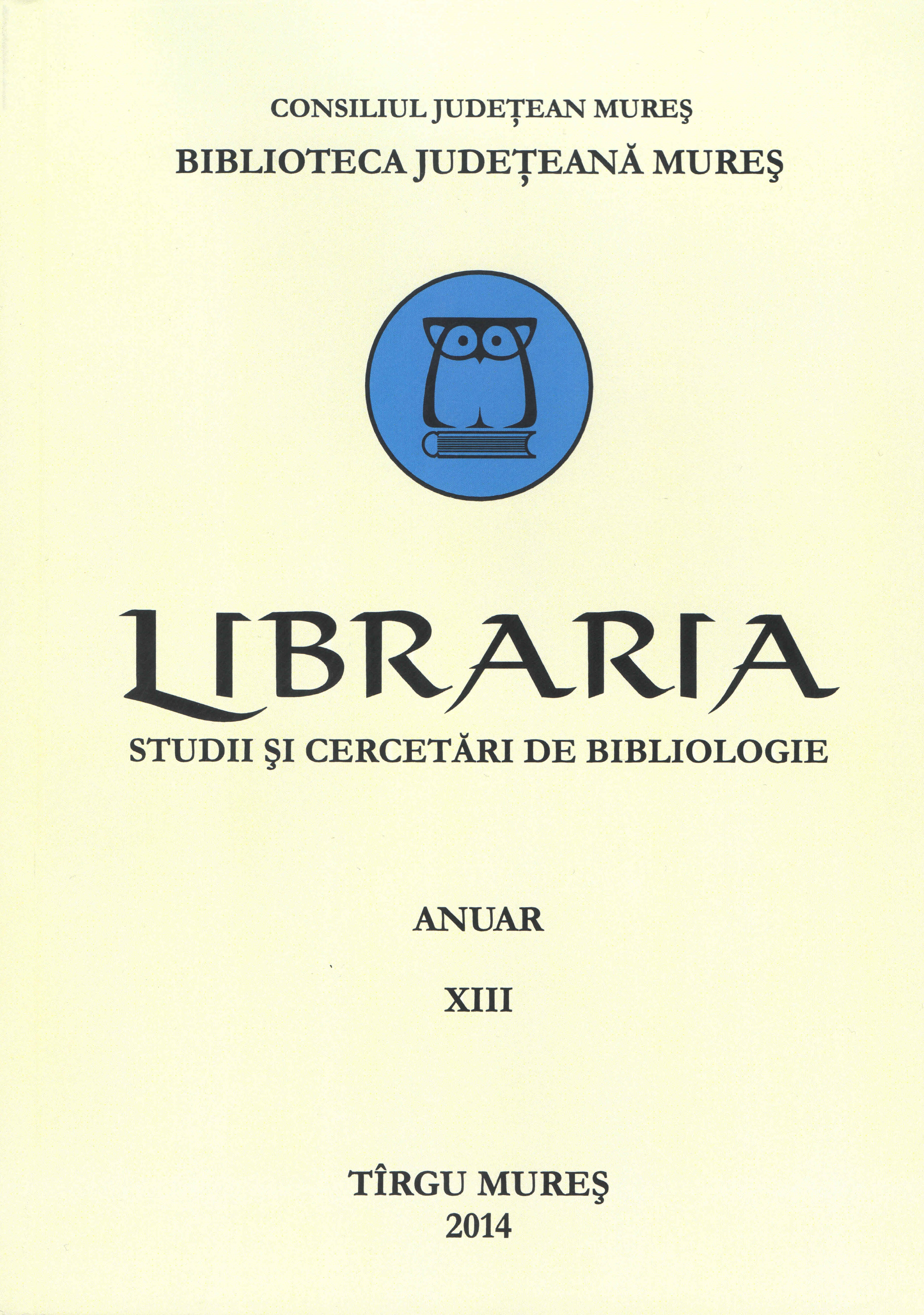Oraşul Dumbrăveni şi Cartea sa de Aur
The Town Dumbrăveni and Its Golden Book
Book itineraries
Author(s): Ela CosmaSubject(s): History, Library and Information Science, Other, Local History / Microhistory
Published by: Biblioteca Județeană Mureș
Keywords: Libraria; Biblioteca Județeană Mureș; biblioteconomie; bibliologie; carte veche; carte bibliofilă; istorie locală; servicii de bibliotecă; Biblioteca Teleki; carte veche românească;
Summary/Abstract: The article introduces the Golden Book of the small Transylvanian town Dumbrăveni (Elisabethstadt, Erzsébetváros), lying on the banks of the river Târnava Mare (Große Kokel, Nagy Kükülö). This valuable chronicle of the settlement’s past times, from its very beginnings (7.000 years ago) up to now, is signed by Nicolaie N. Nedelcu and it represents a historical monograph of the best quality.After the first medieval mention of Ebesfalva (Ibaşfalău) in 1332, we become acquainted with the Romanian village, flanked by the famous Apafy castle, that is built here by the homonymous Hungarian noble family in 1552. The village and castle turn into an oppidum (market place), which gets glory as a princely residence in the time of Mihail Apafy I, prince of Transylvania (1661-1690). His invitation, addressed to the Armenians from the Principality of Moldavia, to come over the Carpathian Mountains and settle down in Transylvania is about to radically change the fate of the oppidum. The new setllers literally build up an Armenian urban center, endowed with privileges by the Austrian emperors Carl VI, Maria Theresia and Joseph II. By the name of Elisabethopolis, the settlement becomes a “privileged town” in 1733, a “totally privileged town” in 1758 and a “free royal town” in 1786-1791. The 18th century marks, no doubt, the golden age of this important commercial town of the Armenians, who are completely magyarized until the 19th century. After the Armenians’ departure, Saxons and Jews enter the town, while the Romanians still represent the demographic majority. In 1919 the Gipsy National Assembly, rallied here, adheres to Transylvania’s Great Union with Romania. In 1925, by royal decree of Romania’s king Ferdinand I, the town receives its current name Dumbrăveni. After the Second World War, in 1952, a large number of Saxon families (either from Braşov and Southern Transylvania, or already deported in the Bărăgan Plain near the Danube) are sent toLibraria281Dumbrăveni under house arrest. By 1989, the Saxon population of the town emigrates to Germany.The special architecture and the cultural marks of the town reverberate its multiethnic character, while the unique Armenian cathedral still mirrors the timeless central symbol of Dumbrăveni.
Journal: Libraria. Studii și cercetări de bibliologie
- Issue Year: XIII/2014
- Issue No: 13
- Page Range: 280-289
- Page Count: 10
- Language: Romanian

